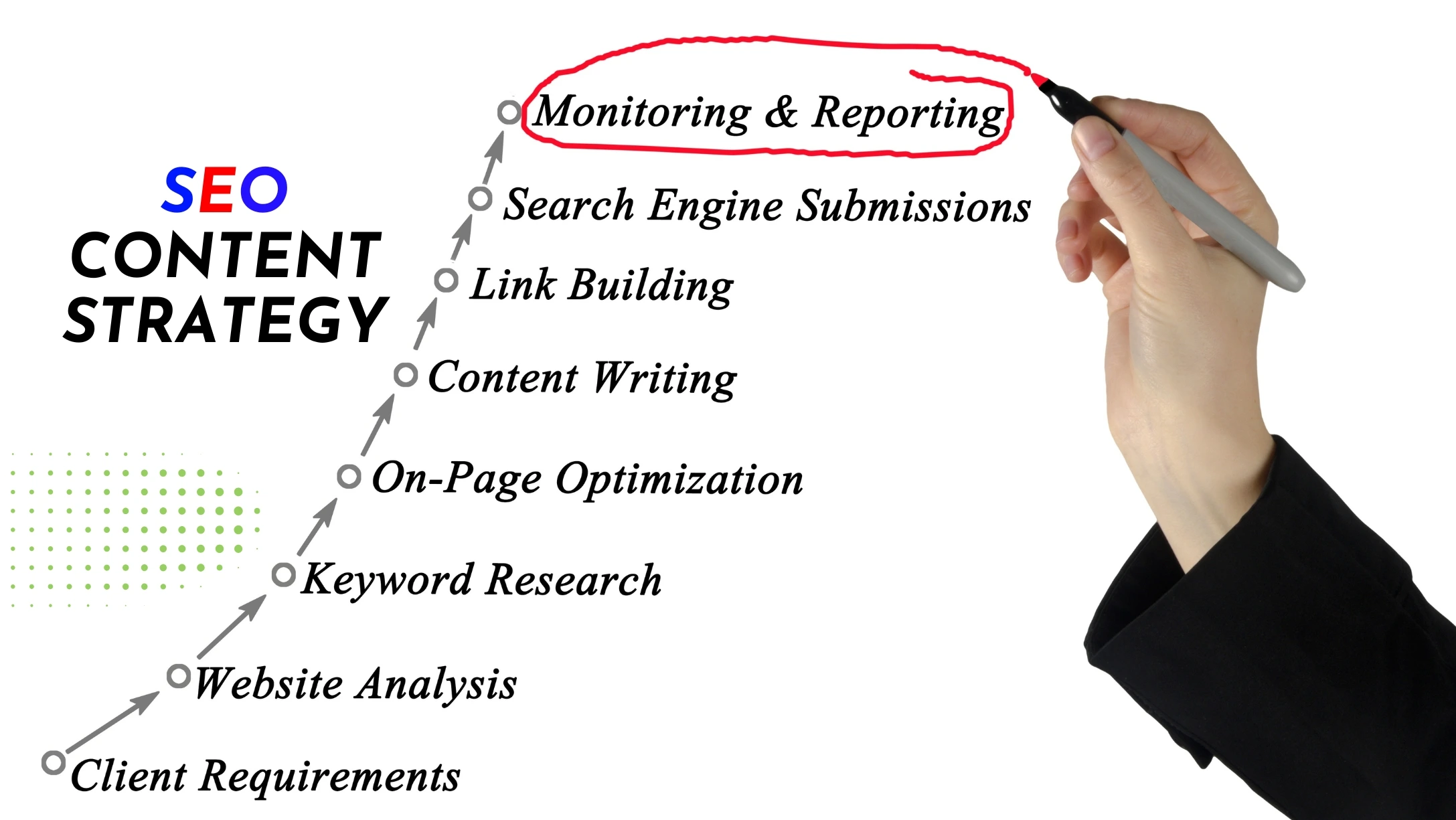Creating material without a clear aim feels like wandering without direction. You may stumble across something useful, yet you will likely miss the mark. A well thought-out SEO content strategy provides guidance. It offers structure, relevance, and impact. Rather than guesswork, your content reflects search intent, audience desires, and brand values.
A strong SEO strategy goes further than chasing top positions. It earns respect, solves problems, and fosters interaction. This article explains steps required to construct an approach that truly delivers results.
Step 1: Begin with Comprehensive Research
Every project worth pursuing starts with evidence. Investigate your subject thoroughly. Use research tools, feedback loops, and analytics platforms. Discover what questions people ask and behind those topics lies.
Exploration should include behavior patterns, competitor performance, and overlooked niches. That is where opportunity hides. Support ideas using verified information. Content rooted in data establishes trust.
Step 2: Understand Who You’re Writing For
Awareness of your target audience transforms your writing style. It informs word choice, topic depth, and structure. Do readers seek introductory overviews or advanced insights? Are they looking to learn or to buy?
Develop personas when helpful. Identify their challenges, objectives, and preferred formats. A genuine SEO strategy centers on understanding readers rather than following algorithms. Content that connects resonates more deeply.
Step 3: Create a Structured SEO Content Strategy
Now assemble your framework. Your SEO content strategy needs clearly defined objectives for both short-term traction and long-term brand building. Select priority keywords and organize them by purpose—such as learning, buying, or browsing.
Align each term to content formats like how-tos, product pages, or essays. Schedule publication dates and distribution channels. Clarify how each piece moves your audience closer to goals.
By planning in this way, your SEO strategy avoids chaos and yields measurable progress.
Step 4: Write Strong, Optimized Headlines
Your headline determines whether people click. A lackluster headline wastes opportunity. It needs clarity, energy, and the main phrase placed comfortably. Include strong verbs to spark interest.
Ask compelling questions or offer a clear solution. A headline that promises value increases engagement and dwell time.
Step 5: Hook with a Powerful Introduction
Once someone clicks, the introduction must earn their attention. Start with empathy, a surprising fact, or relevant issue. Clearly state what follows and why it matters.
Answer the silent question readers have: Is this worth my time? Provide that assurance quickly. A confident start makes them stay.
Step 6: Use Clear Subheadings and Structure
Well-structured articles are easy to follow. Use H2 and H3 tags to segment your text. Make each heading descriptive about the upcoming content.
Subheadings help users skim and understand your message. They also assist search engines in interpreting page layout. Smart SEO strategy includes thoughtful formatting that enhances readability and indexing.
Step 7: Offer Fresh, Valuable Insights
Recycling common advice leads to forgettable content. Share real examples or behind-the-scenes details. Add data points or client stories. Show how methods work in practice.
Readers appreciate when authors reveal genuine experience. A smart SEO strategy highlights authenticity and sets you apart.
Step 8: Keep Language Clear and Concise
Readability matters. Avoid complex sentences. Eliminate filler words. Communicate clearly in plain terms.
Split paragraphs into digestible pieces. Use formatting like bullets or bold to highlight key ideas. Simple writing connects faster.
Step 9: Use Keywords Naturally and Strategically
Balancing keywords is essential. Spread SEO content strategy across your text without forcing it. Maintain natural rhythm and context. Do not overoptimise it like the one given below:
This SEO content strategy raises search relevance. SEO content strategy boosts indexing potential. This SEO content strategy builds thematic authority. SEO content strategy optimizes internal linking. This SEO content strategy aligns with user questions. SEO content strategy guides snippet placement. This SEO content strategy enhances visual content relevance. This SEO content strategy improves site architecture. SEO content strategy encourages visitor engagement.
Step 10: Add Relevant Visuals
Visual elements boost reader interest. Use charts to display numbers. Include infographics to simplify complex ideas. Insert screenshots for tutorials.
Optimized images with descriptive alt text and file names improve both reader experience and SEO content strategy signals.
Step 11: Optimize for Featured Snippets
To appear in answer boxes, provide direct replies. Use numbers, bullet lists, or definitions. Format clearly so search engines can extract content easily.
Adding a “What is…” or “How to…” section helps. That SEO content strategy aims for top-of-page visibility
Step 12: Link Internally and Externally
Your content network should support each piece. Link to related posts with descriptive anchor text. Connect articles to form cohesive clusters.
Reference external authorities when appropriate. That builds credibility and resourcefulness. Maintain link integrity, making sure all URLs work correctly.
Step 13: Enhance Readability
Read your text aloud to test flow. Use tools to track reading level. Replace complex phrases with simpler ones.
Highlight important sentences and add whitespace. This improves comprehension and retention.
Step 14: Design for Mobile Users
Most visits come from phones. Ensure your layout resets gracefully on smaller screens. Verify images resize correctly. Check that buttons remain tappable.
Mobile functionality affects indexing and user satisfaction. A complete SEO strategy includes mobile-first design.
Step 15: Improve Loading Speed
Delay in page loads drives visitors away. Choose lightweight templates. Compress assets and reduce unnecessary scripts.
Test performance using speed audit tools. Faster pages support better user experiences and SEO outcomes.
Step 16: Include a Clear Call-to-Action
Guide readers to take the next step. Invite them to comment, download, or subscribe. Connect your content to a relevant action.
Well-placed prompts foster interaction that indirectly supports SEO success. Purposeful SEO strategy always includes conversion direction.
Step 17: Track and Analyze Results
Publishing is only the start. Use analytics to evaluate behavior. Monitor visits, engagement, and rankings. Identify what works and what does not.
Adapt based on real-world performance. A flexible SEO strategy changes with insight and trend shifts.
Step 18: Refresh Old Content Regularly
Topics and data evolve over time. Revisit existing pages and update content. Remove outdated links and refresh examples.
This ensures your material remains relevant and continues earning visibility. A refreshed SEO strategy treats content as a living library, not static assets.
Conclusion
Effective content creation is deliberate and iterative. Careful planning, genuine insight, and ongoing refinement produce strong results. A solid SEO content strategy never stays the same. It grows with audience needs, industry trends, and engine updates.
Apply these steps and watch your traffic and influence build steadily. Commit to writing with integrity and optimizing with care. Your digital presence will flourish based on confidence and strategy.
FAQs
Is seo and content strategy good?
Ans: Yes. Content strategy for SEO is good.
What is SEO content strategy?
Ans: It is a planned approach to creating and organizing content that helps websites rank higher in search engines.
Can anybody follow SEO strategy?
Ans: Yes



